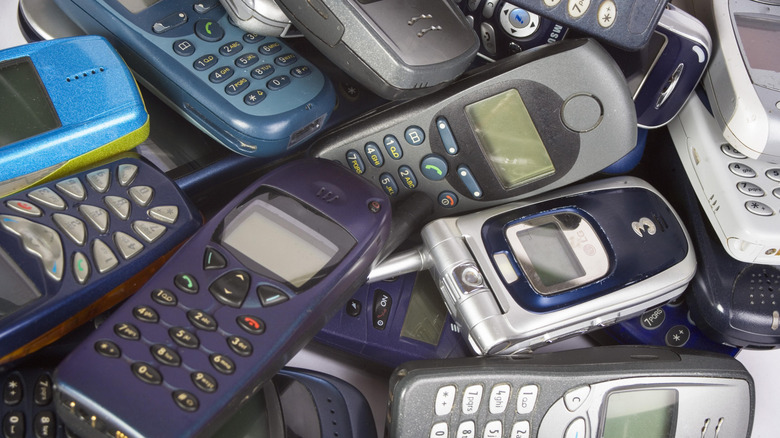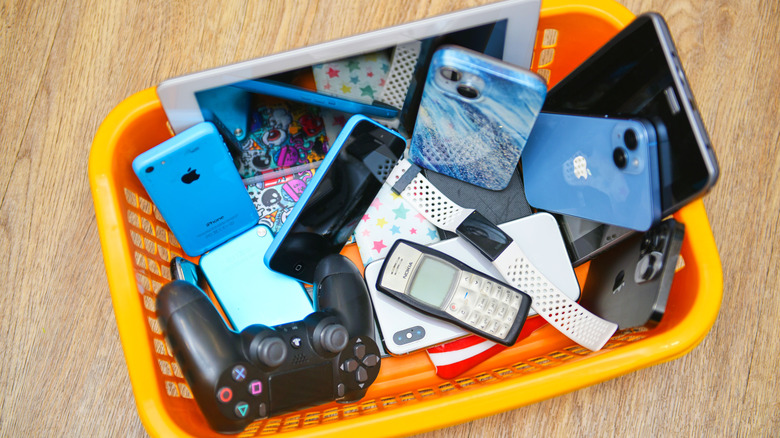How Researchers Are Converting Discontinued Phones Into Tiny Data Centers For Edge Computing
With the rapid pace at which new tech devices are released each year, it's common for people to upgrade to new smartphones every so often. But what happens to their old devices? Well, many tend to hold on to their older gadgets, keeping them in drawers somewhere. Others end up in landfills, eventually contributing to global environmental and health problems. Only a few make their way to recycling facilities, and that's because not everyone knows how to dispose of old electronics the right way.
Interestingly, a team of researchers at the University of Tartu in Estonia has developed a new way to address the world's growing problem with discontinued phones. They extend the life of older devices by transforming them into compact data centers designed for edge computing. Such tiny data centers can be used for tasks that require immediate data analysis in environments with limited internet connectivity. After removing the batteries from the units, they house them together in 3D-printed enclosures. They then add circuitry for its power source. The modular design makes it easy to replace malfunctioning units without discarding the entire setup.
For their pilot test, they conducted an underwater experiment, monitoring marine life without human oversight. Instead of having divers collect hours of video footage for manual analysis of aquatic life, the researchers believe their invention is a step forward to a more advanced and less risky monitoring system. They also foresee other applications for their device, such as monitoring bus stops and other public infrastructures.
The e-waste problem covers more than just dated phones
E-waste is a more critical issue than everyone realizes. It is one of the fastest-growing contributors to the global waste problem. Smartphones appear to be the most conspicuous contributors as they have become ubiquitous over the past decade, but that's actually not the case. A large portion of e-waste is actually hidden in plain sight. Items like vapes, electronic toys, and cables — including the Apple lightning cables you no longer need — often escape public scrutiny even though they comprise the bulk of the problem and heavily contribute to environmental degradation.
Based on 2024 estimates, around 9 billion kilograms of this hidden e-waste are discarded annually, despite containing valuable and potentially hazardous components, like copper wiring and lithium batteries. When not properly disposed of, they can cause chemical contamination and pose fire hazards. As a critical raw material for various technologies, copper can be recycled for use in multiple industries instead of being left to corrode in dumping grounds.
Similarly, lithium can be repurposed for different renewable energy initiatives. Yet, much of it ends up in landfills or incinerators due to a lack of proper recycling knowledge and inefficient collection and recycling efforts. The smartphone industry is one of the biggest contributors to lithium battery waste. The WEEE (Waste Electrical and Electronic Equipment) Forum expected over 5.3 billion mobile phones to become e-waste in 2022 — just imagine the situation in 2025. A significant portion likely had lithium batteries, as modern smartphone designs now encase the batteries.
Where majority of the world's e-waste goes
Many people in Western countries regularly upgrade their computers and gadgets. As a result, their old devices become e-waste, which is then exported — often illegally — to other countries. In recent years, Thailand has become a major recipient of this e-waste, with the BBC reporting a staggering twentyfold increase in the country's incoming electronic waste over the past decade. Citing the local environmental group Earth Thailand, the outlet reported that the figure increased from 3,000 tonnes in 2018 to 60,000 tonnes as of 2025.
Before Thailand, China was the world's largest importer of e-waste. However, after China banned imports in 2018, the U.S. and the European Union were left scrambling to find destinations for their e-waste. Apparently, there are laws in place that prevent these nations from sending their e-waste to other countries. However, they are able to bypass these laws by labeling the shipments as "second-hand electronic goods for resale." Once they arrive in Thailand, the old electronic devices are dismantled and smelted to retrieve the valuable metals they contain. In the process, toxic fumes that can endanger both the workers and nearby communities are produced.
Meanwhile, some manufacturers have since stepped in to help address the global e-waste problem through trade-in programs and product designs that prioritize repairability and sustainability. For example, Apple sells refurbished iPhones from its trade-in program as part of its sustainability efforts, Samsung accepts trade-ins, and Acer has altered its product design and packaging to reduce carbon emissions and plastic use.


